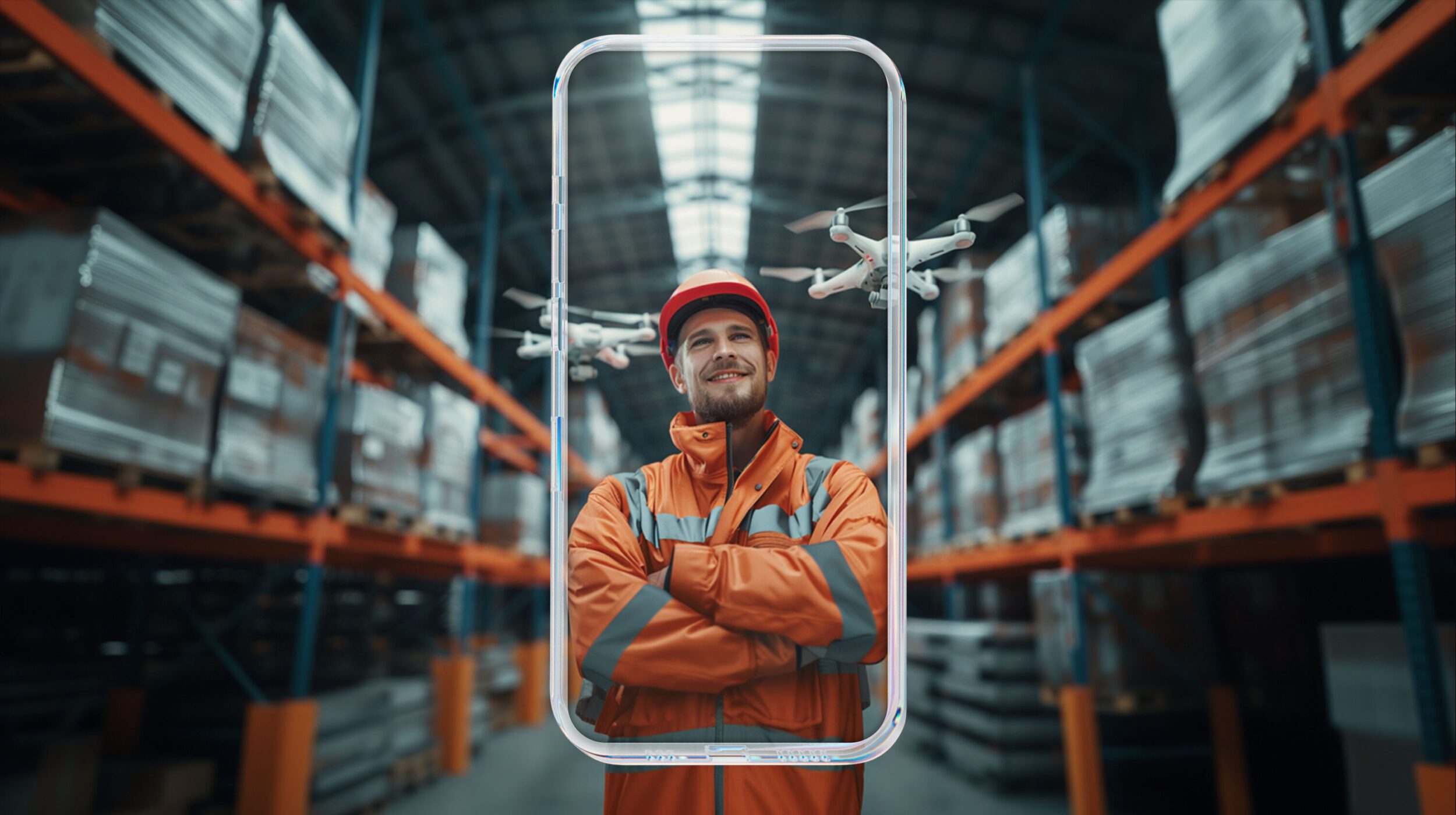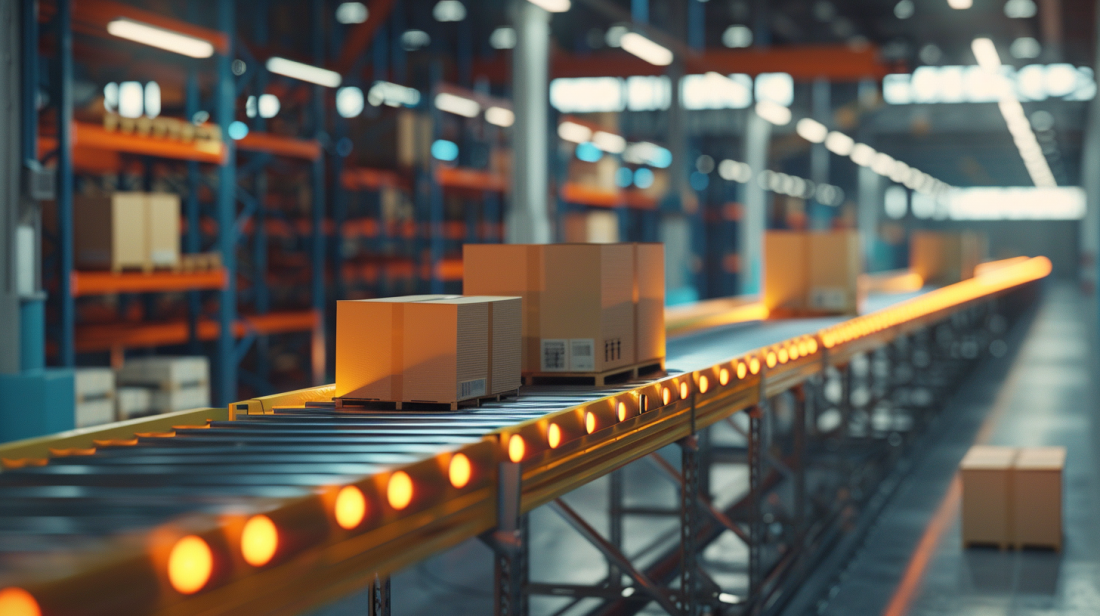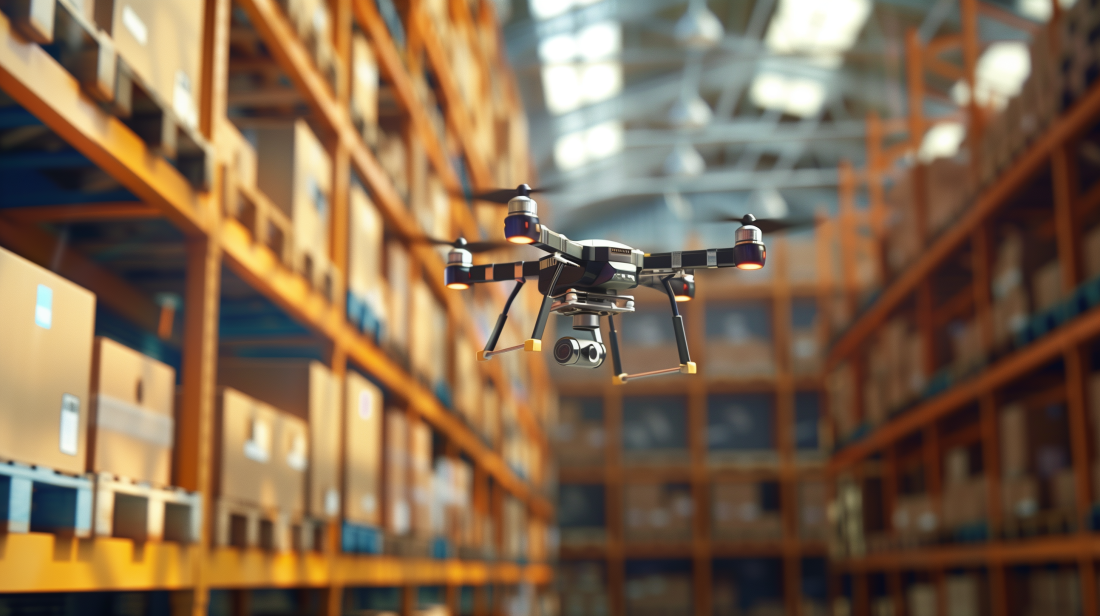
Navigating the Future: the Logistics Trends That Will Further Shape the Industry in 2024
Within the dynamic realm of global trade, logistics serves as the foundation for supply chain operations while acting as a crucial link connecting producers, distributors, and consumers. As we look forward to 2024, the way we handle logistics is set to change even more. This change will be fueled by advancements in technology, a growing emphasis on sustainability, and strategies driven by data.
That’s why, in this article, I’ll discuss the key trends in the logistics landscape that will shape the industry in 2024. However, before delving into examining these trends, I’ll address the challenges confronting the logistics industry (as understanding these challenges is paramount for crafting effective solutions). Many of the trends set to reshape logistics in 2024 inherently provide solutions to these challenges, creating opportunities for growth, efficiency, and a more sustainable future.
Challenges that Influence Logistics Operations in 2024
In 2024, logistics industry trends underscore significant challenges that will really shake up how things work in this field. One major concern is the growing risk of cyber attacks. With more reliance on digital tools for tasks like tracking shipments and making predictions, it’s crucial to keep our systems safe from cyber threats. The logistics sector needs to make sure it’s putting strong cybersecurity measures in place to keep data safe, maintain the reliability of digital systems, and keep operations running smoothly.
At the same time, the industry faces a multi-faceted regulatory compliance challenge. The global trading environment is characterised by constantly changing regulations, including trade agreements, customs protocols and stringent environmental standards. Navigating these regulations requires not only compliance but also proactive adjustments and ethical business practices which are hard to find nowadays. The ability to quickly adapt to regulatory changes is a decisive factor for logistics companies that want to maintain smooth cross-border operations.
Furthermore, the ongoing shortage of qualified talent could pose another hurdle for logistics firms. The evolving demands of the industry call for professionals with diverse skills, ranging from data analysis and tech know-how to sustainability knowledge. To stay ahead in a landscape driven by tech advancements and sustainable approaches, logistics companies must figure out how to attract and keep skilled employees.
As these challenges come into focus for logistics companies, moving forward demands a dedication to innovation and smart problem-solving. Being able to use the latest tech, adjust to new regulations, and build a capable workforce will be crucial in tackling these issues.
Logistics Industry Trends
The term “trend” covers a lot of ground and is broader than one may think. Hence I wanted to underline that when I mention trends in this article, I’m talking about the changing practices in the logistics industry that have been gaining momentum lately and are getting more attention. Even though some of these practices have been labeled as trends before, their importance keeps growing and evolving, rather than staying the same.
It’s crucial to recognise that embracing trends should be a deliberate and thoughtful process. Knowing your “why” and understanding the expected outcomes are essential considerations before adopting any solution. I would not advise blindly following the latest logistics trends in the hope of gaining a competitive edge yet without a deeper understanding. While innovation is crucial, it’s just as important to understand that effective logistics management relies on taking a comprehensive approach that considers many different factors. Taking a closer look is key to understanding the challenges and opportunities that the logistics industry will face in the future.
However, from the seamless integration of advanced technologies to an increased emphasis on sustainable practices, trending logistics solutions can address existing challenges and pave the way for solutions that increase efficiency, reduce costs and support a more eco-conscious approach to logistics management. Let’s talk about that!
Technology Integration in Logistics
Artificial Intelligence and Machine Learning
The ongoing evolution of the logistics in the following months will be significantly shaped by the end-to-end integration of cutting-edge technologies. At the forefront of this transformation are Artificial Intelligence (AI) and Machine Learning (ML), which have been revolutionising the way logistics operations are organised for some time.
These logistics technologies enable professionals to leverage predictive analytics, allowing them to react and anticipate changes in demand patterns. AI and ML algorithms optimise important aspects such as route planning, inventory management and demand forecasting, providing a level of efficiency and responsiveness never seen before in logistics management.
Combining predictive analysis with data-driven decision-making isn’t just about solving existing challenges – it’s about being proactive. This forward-looking approach helps the industry better handle the complexities of the market by creating a responsive supply chain that can quickly adapt to changing demands and uncertainties.
Given the broad nature of predictive analysis, we interviewed our AI expert, Paweł, to delve into the intricacies of this concept. In the discussion, Paweł offers valuable insights, clarifying the definition of predictive analysis and illustrating its practical application in your software development logistics project.
Internet of Things
At the same time, the logistics sector is expanding its activities towards the Internet of Things (IoT), integrating a network of interconnected devices and sensors across the supply chain itself. These devices provide real-time visibility into the location, condition and status of goods in transit. Vehicles equipped with IoT sensors, smart warehouses and connected devices throughout the supply chain contribute to the seamless flow of information. Ultimately, it grants logistics stakeholders a comprehensive understanding of the entire logistics ecosystem. What a solution!
Blockchain
Furthermore, the adoption of blockchain technology enables logistics providers to tackle long-standing challenges concerning the transparency and security of supply chain operations. Blockchain’s decentralised and tamper-resistant nature offers a reliable and transparent ledger, boosting accountability and mitigating fraud risks.
As logistics companies gradually incorporate these technologies into their operations, the industry is undergoing a significant transformation towards enhanced efficiency, accuracy, and adaptability. This transition is shaping a logistics management system that is not only technologically advanced but also resilient, capable of navigating the complexities of the modern business landscape with remarkable flexibility. This integration lays the groundwork for a logistics ecosystem that is not just reactive but also proactive, setting a new benchmark for operational excellence in the ever-evolving logistics industry of tomorrow.
Logistics Demand Forecasting
Demand forecasting is becoming a key element of effective logistics supply chain management. This process involves estimating future customer demand for products or services using data and various factors influencing the market.
Logistics companies use analysis of variables such as sales history, economic conditions, market trends, seasonality, competition, prices, etc. to precisely determine expected demand. Such anticipation allows logistics companies to manage resources such as employees, materials and schedules more effectively, which translates into greater operational efficiency.
The demand forecasting process spans various stages of the logistics supply chain, including receiving, shipping, and delivering goods. The more accurate the demand forecast is at each stage, the better the company can adjust its operations to fluctuating demand levels, reducing the risk of surplus or shortage of resources.
By integrating demand forecasting with the agile supply chain discussed earlier, companies can swiftly respond to shifts in market conditions. This agility enables companies to stay competitive by adapting to new trends or sudden changes in demand.
Moreover, demand forecasting plays a crucial role in minimizing disruptions in the supply chain. For instance, anticipating a surge in demand allows a company to prepare in advance, ensuring sufficient resources are available to fulfill upcoming orders. Without this forecasting element, a logistics company risks facing resource shortages during sudden demand spikes, leading to delays and customer dissatisfaction.
Sustainability in Logistics
Sustainability has evolved from a mere buzzword to a transformative force shaping the very structure of small and medium businesses in logistics. As the years go by, this paradigm shift towards sustainable practices becomes more and more clear. The imperative of environmental responsibility drives logistics companies to adopt and incorporate environmentally friendly initiatives into their core operations.
The data speaks for itself: the United States continues to be the leading source of carbon emissions, accounting for around a quarter of all global transport emissions. In 2022, the U.S. transportation industry emitted an astonishing 1.84 billion metric tons of carbon dioxide (Statista). Therefore, in 2024, American companies are expected to take more decisive action to reduce greenhouse gas emissions.
Recent research indicates that approximately 77% of European consumers express a keen interest in purchasing sustainable luxury goods. Moreover, 51% of these individuals are willing to invest an additional 10% for items that are produced or delivered in a sustainable manner (Internet Retailing).
A key aspect of the sustainability trend is the widespread adoption of electric vehicles, which reduces transportation’s carbon footprint and contributes to global efforts to combat climate change. That’s why logistics companies can integrate software functionalities that support the management and tracking of electric vehicle fleets. This includes real-time monitoring of battery levels, charging station optimisation, and predictive maintenance to ensure the efficient operation of electric vehicles.
At the same time, the logistics industry is actively integrating renewable energy sources, minimising the impact of energy consumption on the environment. Software solutions can assist logistics companies in managing their energy consumption more sustainable by implementing tools to track energy usage, optimise operations based on renewable energy availability, and provide insights for transitioning to renewable energy sources.
Moreover, circular economy principles are gaining ground, emphasising the importance of reducing, reusing and recycling materials throughout the supply chain. This thus minimises waste and contributes to a more sustainable ecosystem. By using logistics software solutions, companies can facilitate the implementation of circular economy practices by optimising reverse logistics processes. This includes effectively managing the returns and recycling of materials, tracking product life cycles and minimising waste through improved inventory management.
This dedication to sustainability isn’t just about following rules; it’s becoming a must-have strategy that speaks to a rising number of eco-conscious consumers. Plus, sustainability trends in logistics are shaping the way software solutions are developed. As businesses aim for greener practices, we require software that not only backs sustainable logistics operations but also contributes to broader environmental aims within the industry.
In essence, sustainability in logistics isn’t just a trend; it’s becoming a core value that guides responsible and future-oriented industry approaches. It’s paving the way for a future where environmental consciousness and logistical effectiveness go hand in hand.
Growing Automation Due to the Global Shortage of Workers in Logistics Companies
In the field of logistics, there is a clear problem related to the global shortage of workers, which significantly increases production and delivery costs. In response to this difficulty, manufacturing companies and logistics service providers are increasingly turning to automation.
Warehousing processes are becoming more and more automated, with machines being responsible for picking products and initiating the packaging process. Automation also covers the transport sector, where driverless trucks are becoming increasingly popular. Faced with difficulties related to the shortage of employees, logistics companies are forced to optimise their teams by looking for innovative solutions in the field of automation.
Improved Data Integration with Automation
Automation is a key element in the arsenal of modern companies, reducing costs, increasing efficiency and freeing employees for more productive tasks. In the context of logistics, the potential of automation becomes visible through comprehensive integrations between WMS/ERP backend systems and developing e-commerce platforms.
As the number of platforms and systems in use increases, data becomes extremely valuable in making business decisions. Yet, with the growing range of applications, data ends up scattered across various platforms, forcing users to hop between them to gather what they need — it’s a real hassle.
Integrating WMS/ERP with e-commerce systems is a game-changer here. It automates the collection and consolidation of data from different sources, presenting it all in one central hub. This not only cuts down on search time but also nixes human errors that creep in when collecting data manually. In the end, better data integration means a more efficient and competitive logistics strategy for the company.
Autonomous Vehicles and Drones
At the forefront of the automation trend is the evolution of autonomous trucks, a development with far-reaching implications for freight transportation. Equipped with cutting-edge sensors and Artificial Intelligence algorithms, these autonomous trucks have the potential to revolutionise logistics by reducing dependence on human drivers, optimising routes and minimising operational costs.
The impact on freight efficiency is significant as autonomous trucks offer the prospect of continuous operation, faster delivery times and improved overall supply chain efficiency. Some companies are already experimenting with units consisting of two trucks, one of which is being controlled by a human and the other automatically imitating its movements.
At the same time, the integration of drones is a revolutionary step in logistics. Drones that can navigate difficult terrain and deliver packages directly to specific locations offer unprecedented levels of speed and precision. This is particularly valuable for last–mile delivery in urban areas where traditional methods struggle with congestion and accessibility issues.
Challenges & opportunities
However, alongside promises of increased efficiency and speed, the trend of autonomous vehicles and drones introduces a number of regulatory challenges. It’s important to strike a delicate balance between innovation and safety when it comes to deploying these technologies. Logistics companies must wrestle with issues of compliance, safety protocols and social acceptance.
Despite these challenges, this trend creates a unique opportunity for collaboration between industry stakeholders and regulators. Establishing standard frameworks and guidelines can support the safe and effective integration of autonomous vehicles and drones into mainstream logistics operations. By solving regulatory challenges, the industry can unlock the full potential of these technologies, paving the way for a future where autonomous vehicles and drones seamlessly complement traditional transportation methods. This fosters a more responsive, agile, and technologically advanced logistics ecosystem.
Real-Time Transparency for Customer Satisfaction
The demand for real-time data and visibility in the shipping process has become a non-negotiable aspect of customer expectations, largely propelled by the influence of e-commerce giants like Amazon. The “Amazon effect” has fundamentally shifted consumer shopping behaviours, setting a new standard for rapid order fulfilment and delivery transparency. Nowadays, customers influenced by the seamless and swift experiences offered by Amazon anticipate constant updates on their order status, precise location and accurate delivery windows.
To meet these heightened expectations, businesses need to leverage advanced tracking technologies and robust communication channels. Implementing real-time tracking systems allows customers to monitor their shipments at every stage, providing them with transparency and control over their orders. Furthermore, proactive and clear communication strategies, such as automated notifications and personalised alerts, ensure that customers are well-informed throughout the entire shipping journey.
Integration of Real-Time Tracking in Delivery Apps: Supply Chain Visibility
Delivery apps play a crucial role in meeting consumer expectations for visibility and control over the shipping process. Customers prefer to track their orders within these apps seamlessly, receiving updates on the status, location, and estimated delivery times.
Moreover, stores also recognise the critical importance of seamless communication with suppliers to enhance operational efficiency and provide customers with accurate and real-time order status updates. A prime example of this integration can be observed in platforms like Allegro. By establishing a robust connection with their network of suppliers, Allegro ensures that the entire supply chain is synchronised, offering a comprehensive view of the order fulfilment process within their app.
API Integration in Logistics Technology – Real-Time Optimisation
Fortunately, some solutions allow for processing data in real time, like API-based integration. They are becoming a key element of logistics companies’ strategies, gaining enormous popularity as they allow logistics companies to obtain relevant information about customer orders and shipments immediately.
Providing near-instant updates to customers and trading partners is becoming crucial to meet the rising demand for more frequent order information. These updates not only enhance customer satisfaction but also enable more effective management of business processes.
API-based integrations not only introduce a new dimension of dynamics to the delivery of updates but also complement traditional EDI integrations. Unlike batch processing for EDI, APIs enable more flexible and near-instantaneous data processing. Still, API integrations do not fully replace EDI; rather, both technologies coexist, with APIs bringing flexibility and immediacy where they are most valuable. This approach minimises integration management overhead while maximising their value.
Embracing these practices not only meets current customer demands but also positions businesses as responsive and customer-centric in an era where real-time data and visibility have become essential components of the overall shopping experience.
Conclusion: Logistics Trends
The trends shaping the logistics industry in 2024 highlight an era of transformation characterised by technological innovation, sustainability initiatives, and innovative approaches to transportation and delivery solutions.
The integration of cutting-edge technologies, from Artificial Intelligence and Machine Learning to the widespread adoption of autonomous vehicles and drones, reflects a commitment to efficiency, precision and adaptability. At the same time, the focus on sustainability highlights the industry’s recognition of its environmental footprint and the need for responsible practices.
While these trends bring hopeful solutions to the table, it’s crucial to approach them with care, fully grasping their impacts and keeping our eyes on long-term objectives. As the logistics sector adapts to shifting terrain, it’s not just about jumping on trends for the sake of innovation; it’s about crafting a comprehensive strategy that blends technological progress, sustainability efforts, and regulatory adherence. By doing so, the industry can aim for a future where logistics doesn’t just facilitate but actively shapes robust, sustainable, and future-ready global supply chains!
Whether you’re rethinking the logistics app development process or considering incorporating industry trends into your project, I’m here to help. Don’t hesitate to connect with me on Linkedin or send me an email at [email protected]. I’ll be more than happy to answer all your questions and help you create an effective logistics application tailored to your users’ needs!
Introducing Angelika as your strategic ally in navigating the dynamic landscape of software development. With a specialised focus on various areas, her commitment is to provide you with a competitive edge and foster enduring connections. Whether it’s optimising logistics processes, supporting startups on their growth journey, or enhancing the retail experience, she is dedicated to delivering tailored solutions that align seamlessly with your objectives.






